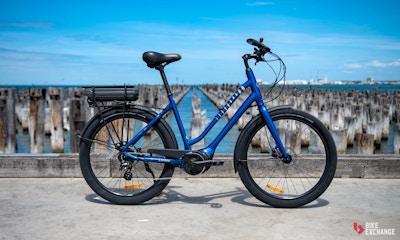For the past 35 years no other mountain bike model name has been more iconic than the Specialized Stumpjumper. So it was big news when Specialized released its new race hardtail and for the first time ever it didn’t carry the legendary name.
The Specialized Epic Hardtail follows on from the brand’s long-standing Epic FSR dual suspension model, a bike that has become the brand’s flagship cross-country and marathon race winner. The Stumpjumper name had grown to become better known as a ‘do-it-all’ dual suspension trail bike.
Despite being a mountain bike, this new Epic Hardtail claims to be Specialized’s lightest frame ever. Given that, what does this new hardtail mean for Specialized and the product line moving forward? BikeExchange Germany’s operations manager Markus Koch headed to the stunning coastal hills of Fréjus, Southern France for CyclingTips, to test out the new Epic at Roc d’Azur, the world’s largest participation mountain bike race.
EPIC FRAME DESIGN
The Epic hardtail is frame designer Peter Denk’s first frame since he moved from Cannondale to Specialized two years ago. Denk was Cannondale’s director of technology back in 2011 when the brand broke records for the lightest production frame with its SuperSix Evo. Prior to that, he was the lead engineer behind the original Scott Addict which also broke industry records for its time.
Denk is famous for his efficient composite frame design and uncommon approaches. such as the pull-shock mountain bike frames he developed for both Cannondale and Scott.
Sitting in a room with a number of European journalists, Peter Denk explained that industrial design and performance orientation are two opposing factors, which make it hard to design an appealing bike that rides great. Nevertheless, his main goal with developing the Epic was to find the balance between a light and stiff frame that handles extremely well and fits into Specialized’s design range.
After a six-month discussion period with the industrial design team, Denk and his team finally found a solution to create that frame, one that they believe sets the new industry benchmark and still looks like it belongs to the American brand.
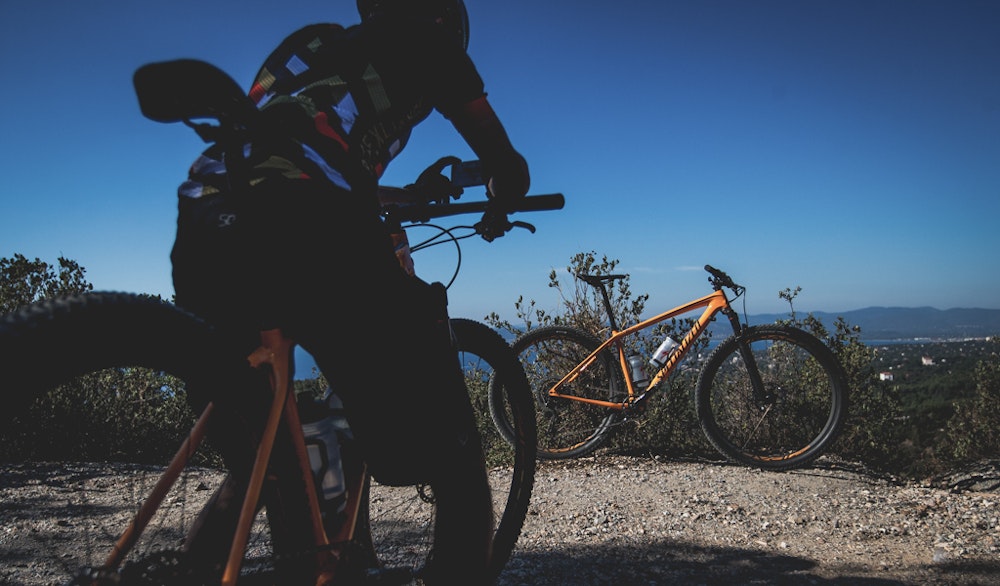
With a medium mountain bike frame that weighs a claimed 875g (paint and hardware included) Specialized has clearly set a new benchmark. This was mainly achieved by refined manufacturing techniques, optimized internal cable routing and an expensive aerospace and military-grade Japanese carbon fibre that was supposedly just made available to the civilian market.
Denk was clear to point out that this new prepreg fiber is not a high modulus fiber that other brands use to achieve high stiffness-to-weight numbers. Instead, it’s a premium quality ‘intermediate’ fiber which offers higher strength and improved stiffness over a regular intermediate fiber. So at a cost to stiffness-to-weight numbers, the benefit of such a fiber and its resin is high impact strength – perfect for off-road (ab)use.
Without the use of a high modulus carbon, the true challenge was making the frame light and stiff.
“We basically developed a new way of how to simulate and how to develop each single layer of a layup,” Denk said. “In addition we added some steps of R&D directly at the factory to make sure each single layer has the perfect shape and direction we wanted.
“During that research project we found out that we had quite a bunch of ‘not needed’ material inside the frame, hidden in unnecessary overlaps or when layers changed their angles to a useless angle due to different drapping (of the fibers).
“In comparison to older frames, we have more ‘working’ fibres in our new Epic hardtail.”
To get an objective impression, the stiffness-to-weight (STW) test done by the German-based Zedler Institute for Bicycle Technology and Safety is a popular one among brands and media in Europe. STW indicates the ratio of stiffness per kilogram of material and showcases the structural performance of the frame. On this metric, Specialized claims, the Epic is by far the best-performing bike in its class.
“In the past years the stiffness to weight ratio of 29ers was peaked at around 100 and every year climbed up one or two points,” Denk said. “Now the Comp sets a new record with 104 which would have been fantastic even for a S-Works level bike. But on top of that the S-Works has a stiffness to weight ratio of 127 which blows away any competition on the composite side.
“It will be very exciting to implement this innovative technology into advanced Specialized products.”
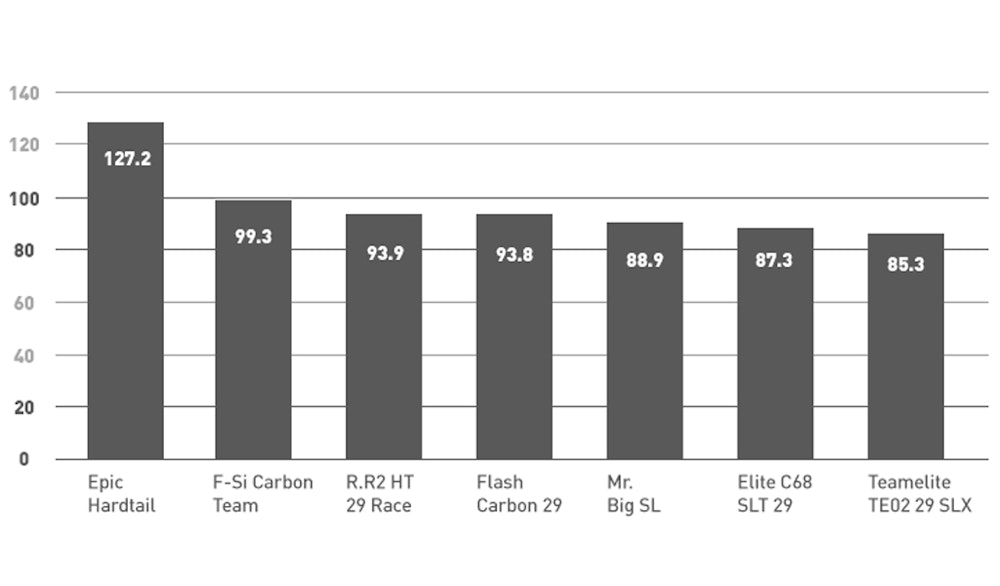
This (slightly vague) chart shows a clear difference in stiffness-to-weight compared to other premium hardtails. The F-Si is Cannondale’s current top offering, the R-R2 is from Rotwild, the Flash Carbon 29 is Cannondale’s former race hardtail (a bike Sagan became a junior mountain bike world champion with) and at a guess, the ‘Mr Big SL’ is a Merida. No sign of the old Stumpjumper.
Something first seen with the current Tarmac road bike, and more recently the Roubaix, the Epic utilises Specialized’s ‘Rider-First Engineered’ design, where all frame sizes vary in their carbon mold shape, lay-up and geometry. This is designed to keep the ride quality and handling experience identical regardless of rider height. As far as we’re aware, it’s a first for Specialized’s mountain bikes.
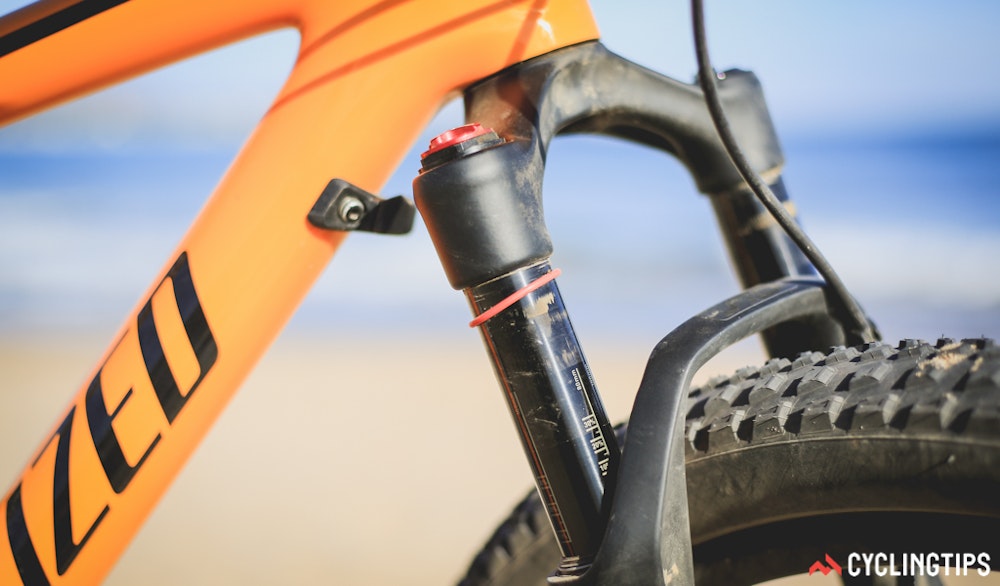
Rather than go to efforts for the downtube to clear the fork crown, Specialized just worked on ways to protect the frame in case of accident. As a side perk, the brake levers and shifters can’t smash into the top tube either.
Looking to the finer details of the frame and it’s the straight downtube that’s obviously different to designs of past. Previous frames from most brands, including Specialized, had material scooped out from behind the head tube in order to clear the top of the suspension fork’s crown. However, from an engineering point of view, straight tubes are superior and so the new Epic went about dealing with the fork crown in a different manner – bumpers.
In case of an accident that cause the bars to spin in anger, the Epic features integrated rubber bumpers on the downtube, behind the head tube, to protect the frame from fork crown impact. While some may say they’re ugly, it’s perhaps better than having to resort to proprietary headsets and stems as other brands have done to address the same issue.
Also new is the internal cable routing which see the cables enter from the head tube and run internally from there. Helping to save weight, the gear cable uses a ‘split housing’ design, which sees the inner cable run bare through the frame instead of using full-length housing runs. There are cable provisions for a dropper post too, although the 27.2mm diameter limits the choices here.
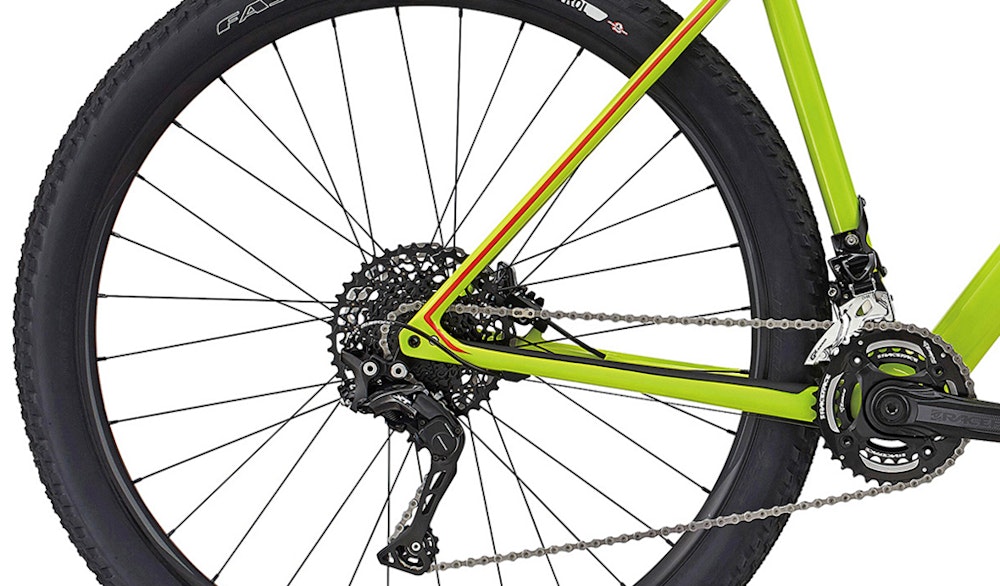
Rather clever of Specialized, a front derailleur can be mounted via the vertical bottle cage rivnuts. The frame is both mechanical and Di2 compatible
While most of the Epic hardtails are equipped with SRAM single-ring drivetrains, it is possible to fit a front derailleur. For this, Specialized’s clever solution, while keeping the frame design as clean as possible, is a front derailleur mounted to the vertical bottle cage screws. Just beneath is the port for a Shimano Di2 wire.
Interestingly, where the likes of Trek’s ProCaliber and its ‘IsoSpeed’ pivoting seat-tube, or BMC’s TE01 elastomer-equipped softtail boast about ride comfort, Specialized makes little mention of the same for its Epic. The only point of discussion here is the slim and exposed 27.2mm seatpost which is designed to take a bit of the sting away when seated.
NEW-AGE GEOMETRY
Peter Denk managed to achieve two of his goals by creating the lightest and stiffest cross-country frame, but a bike needs to handle extremely well to compete at the top of the sport. As cross-country World Cup courses are becoming ever-more technical, the frame needed to be equally at home clearing rock-gardens, gap jumps, drops and other gnarly parts of the trail while still enabling fast acceleration on the flats and on technical climbs too.
Cross-country bikes have always been known for achieving the latter two requirements with ease, but often felt unconformable and a little unstable on downhill sections.
To solve this problem, the engineers slackened the head angle by 1.2° to help give the rider more confidence and stability while descending. Wrapping the large 29er wheels, the short 430mm chain stays remain but with more tyre clearance due to the new ‘Boost’ hub standard which sits 6mm wider (148mm rear axle width) and in turn pushes the drivetrain out wider too. With short chainstays, the bike’s front-center is longer to create a more stable platform for those descending demands.
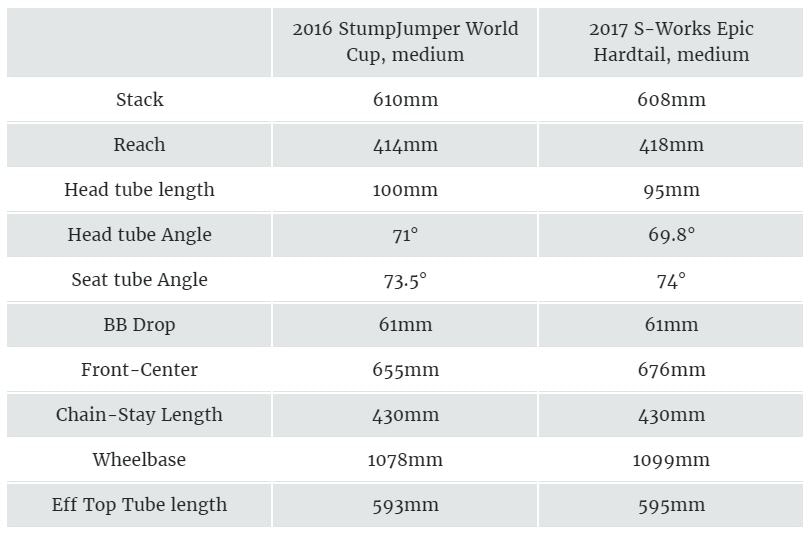
ROC D’AZUR, AN EPIC TIME
The iconic Roc d’Azur, raced by more than 5,000, seemed to be the perfect proving ground for any new hardtail. The terrain in Southern France is technical and extremely rocky, no matter which direction you’re pointed, and if you’d given me a choice, I would’ve chosen a full-suspension bike over a race hardtail. Either way, the trails around the French town of Fréjus made for a make-or-break testing ground to see how the Epic performed.
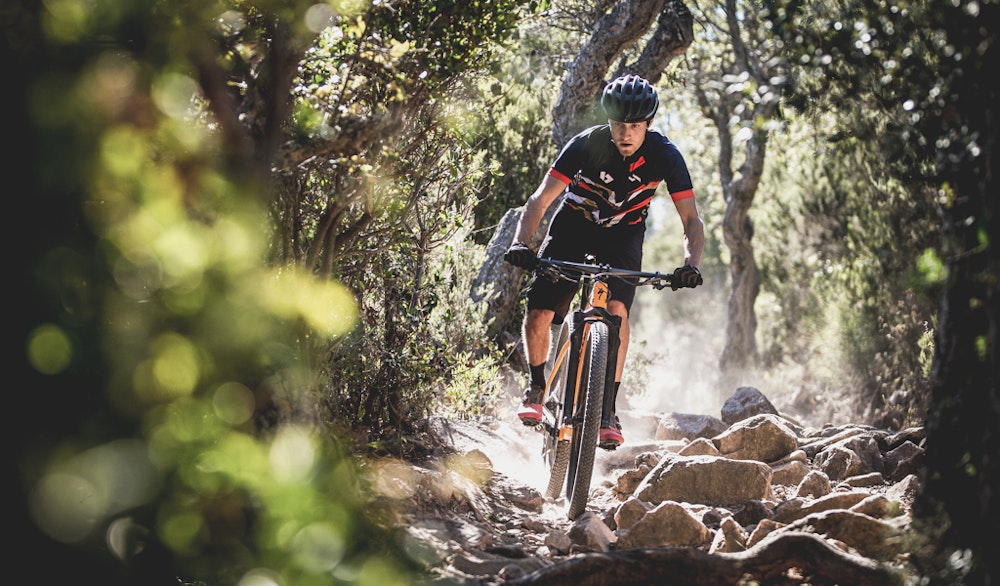
Dropping the Epic into one of many dust-filled rock gardens.
The bike tested for the 56km Roc d’Azur race was a Specialized Epic Hardtail Pro Carbon World Cup. It came with SRAM’s 1×12 XO1 Eagle groupset with a 12-speed cassette that ranged from a 10T to a plate-sized 50T big cog – well warranted for the race’s 1,350m of climbing. Specialized’s Roval Control Carbon 29 wheelset added another touch of premium performance and featured a wide tubeless rim.
The set-up also included a custom RockShox SID fork that gave 100mm of damping in the front with an automated ‘Brain’ lockout. This feature is unique to Specialized and uses a similar technology to what makes the Epic FSR unique.
Effectively, it keeps the damper closed off (locked out) until a force from beneath is felt, at which point the damper opens for a short period to react to the terrain before closing again. From a racing perspective, the rider is left with a fork that remains rigid on the smooth stuff, and keeps the front wheel in traction when it’s rough.
Another point of difference was Specialized’s own SWAT system (acronym for Storage, Water, Air and Tools), with the Epic coming with bottle cages and a special integrated multi-tool that fits beneath the vertical bottle cage. Similar accessory inclusion was recently seen on the new Roubaix.
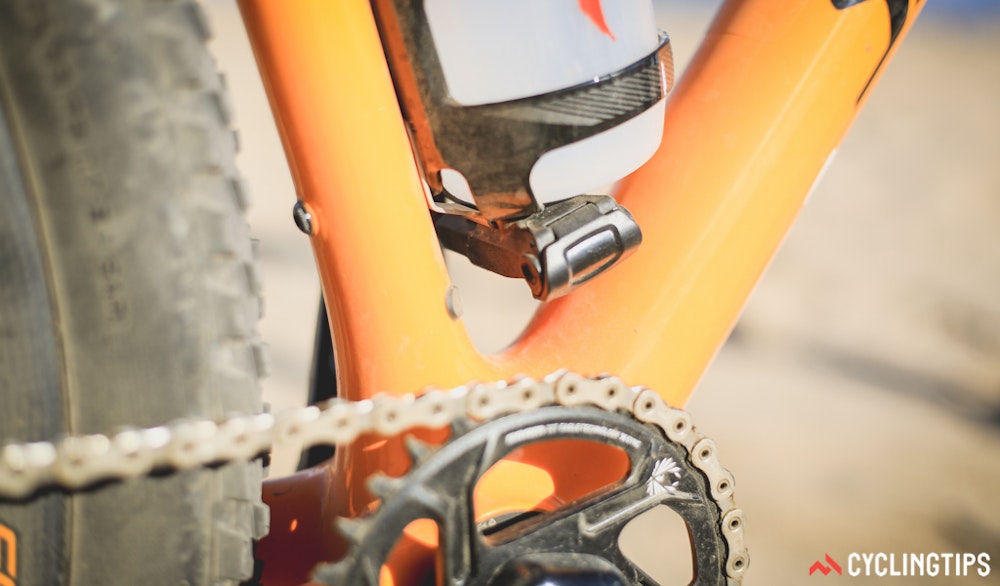
Specialized’s SWAT system attempts to change the way people carry spares.
With breathtaking scenery and an atmosphere only an army of bike riders could provide, the Roc d’Azur course leads for 10 kilometers through bumpy meadows and slightly shaky pontoon bridges over water. From the outset it was clear Specialized was right – the Epic is stiff. The non-flexing chainstays give you the feeling of putting your watts directly to the back tire, but you also feel what that back tread is rolling over.
On the first uphill section, the bike proved to do exactly as claimed – go fast. Despite the steep, rocky and sandy uphill sections littered with other competitors, I was able to pedal and point the bike calmly from the saddle without the front wheel wandering away or having to correct it out of the saddle. The Epic’s real proving ground, though, was still to come.
The terrain of Southern France is as rocky, dusty and sandy as it gets. You have to choose your lines carefully on the downhill as it’s common for the part of the trail you’re riding on to end in a washed out water drain. Thanks to the new geometry, the Epic descends far better than the race hardtails I’ve previously used.
The bike feels easy maneuverable without being too nervous, while the slacker head angle gives you the chance to find your fastest line through the terrain. The longer wheelbase gives stability, which results in greater confidence to just push the bike harder. The 29-inch wheels roll over most obstacles with ease.
For me, the Brain-equipped front fork doesn’t fit with how I prefer my suspension setup. I found the breakaway point of the damper’s lockout just too high and would prefer a fork that offers greater small-bump compliance and a manual lockout. It’s certainly a point of personal preference, and there are plenty of riders who swear by the Brain function for its absolute efficiency when pedaling.
Among the wild descents and climbs that had many walking, breathtaking cliff views tried to distract. However, it’s the latter part of the race that really tests ones mettle. Here, the race becomes a survival of the fittest as you’re forced into a cyclocross atmosphere along the beach – thankfully the Epic is one easy bike to carry.
2017 LINE-UP
There are four more models available (note: varies by location) that all have different specification – starting at US$1800/AU$2500/€1599 with the base-model Epic Hardtail and topping out at US$5500/€4999/AU$TBC for the Pro Carbon World Cup Version as tested.
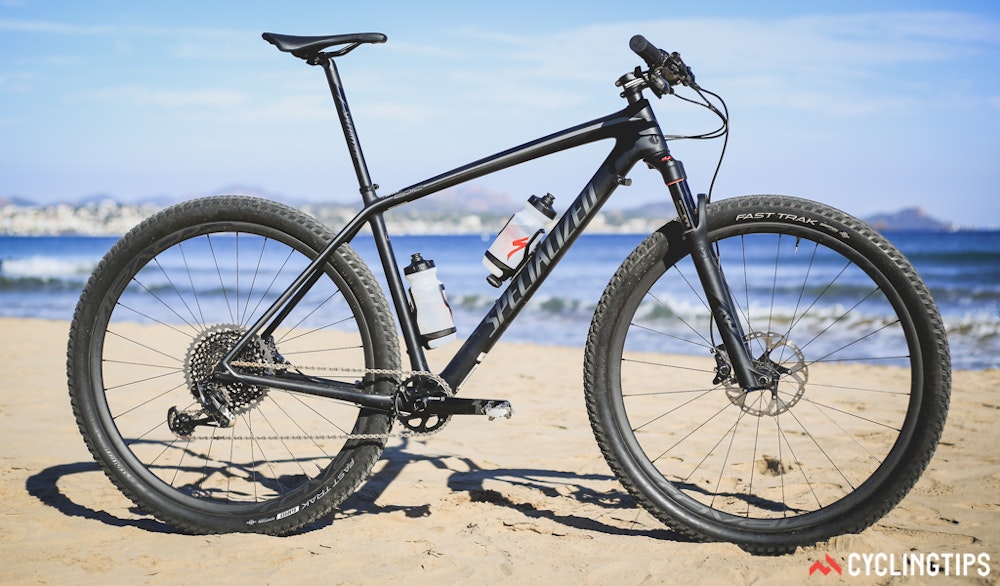
The 2017 Epic Hardtail Pro Carbon World Cup is also available in a stealthy black.
The S-Works version is said to be available later this year and uses FACT 11m Carbon instead of the FACT 10m found in the Pro version. The pre-production version of this top-tier model weighed an impressively light 8.3kg.
CONCLUSION
If you’re looking for a fast and stiff race hardtail that’s the off-road equivalent of a sprinter’s road bike, the new Epic is one of the market’s best. It’s unbelievable direct in power transfer and finally has a geometry that enables confident descents; something especially important if your descending skills aren’t quite as good as your climbing legs.
However, the biggest take-away may just be that the lessons learned in creating this new Epic could give us a glimpse into the future of frame design.
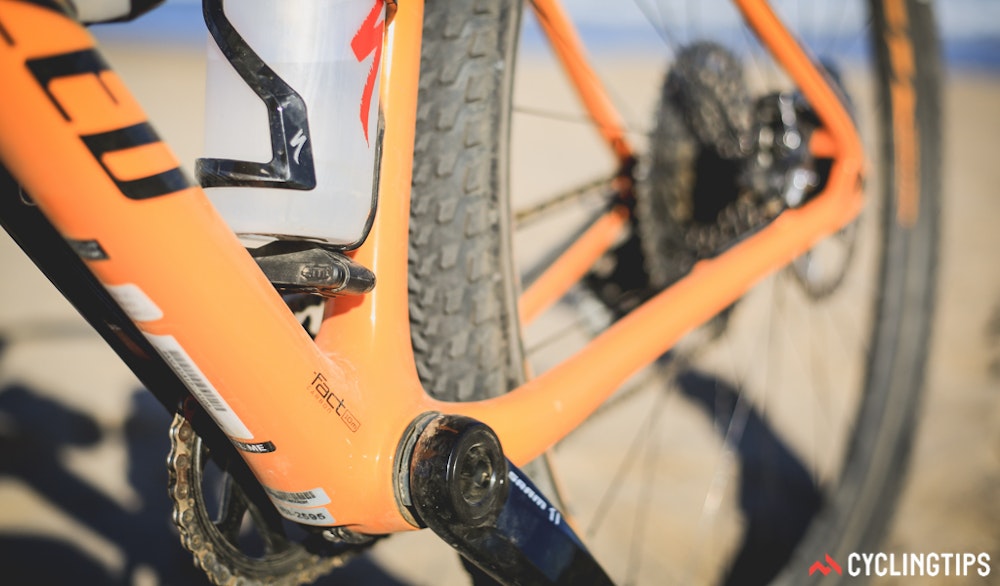
A large pressfit bottom bracket gives plenty of material area to create an impressively stiff pedaling platform.
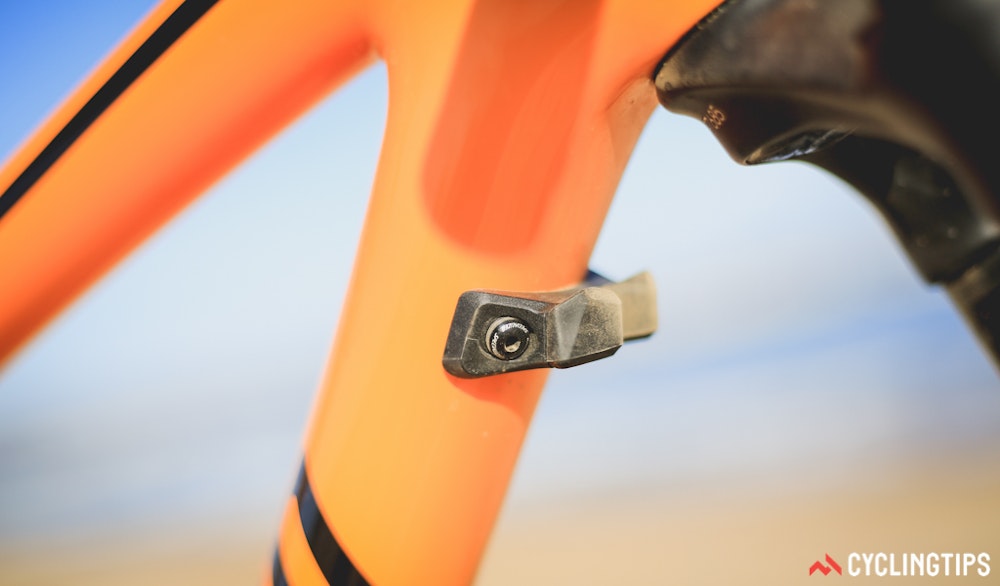
A close up of the bumper designed to protect the downtube.
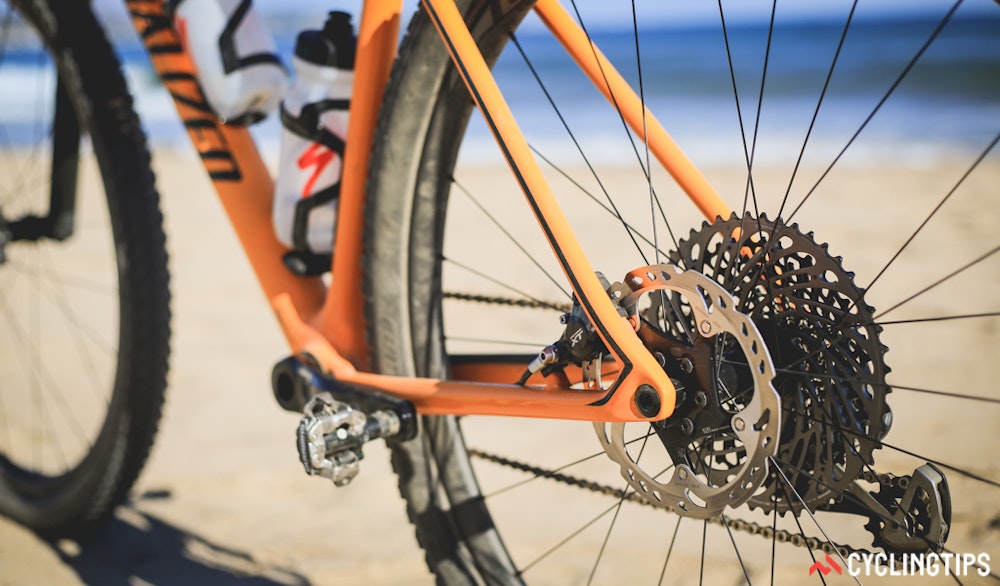
The large 29er wheels are tucked up into an impressively short rear end.
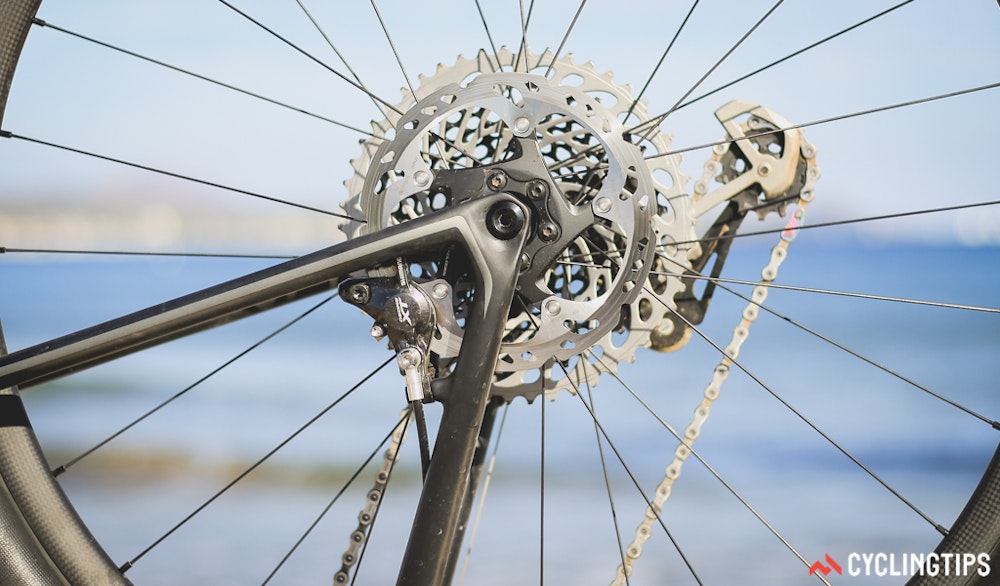
Bolt-up thru-axles are lighter than those with handles and so have become quite popular on cross country race bikes.
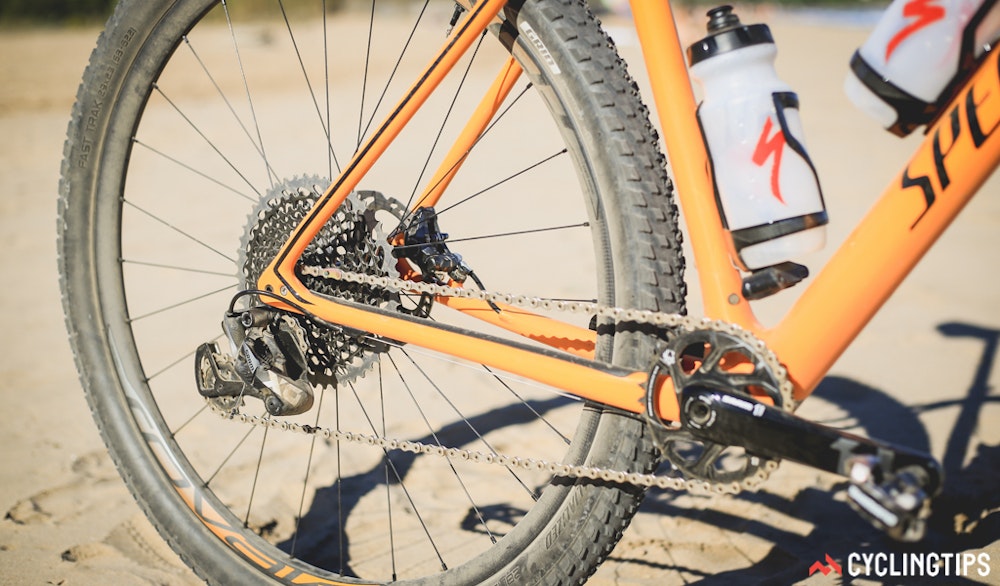
SRAM’s new 12-speed Eagle featured on the Epic test rig. With a 50T big cog, the available range was impressive.
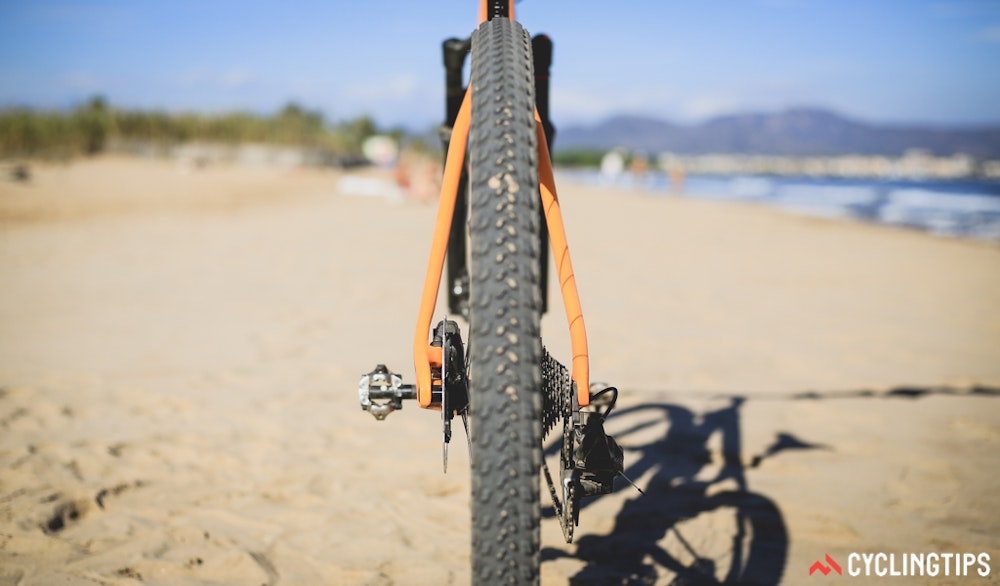
Boost spacing means a 148mm width rear axle. It’s the closest thing to a ‘standard’ rear wheel width on modern mountain bikes.
A large pressfit bottom bracket gives plenty of material area to create an impressively stiff pedaling platformA close up of the bumper designed to protect the downtube The large 29er wheels are tucked up into an impressively short rear endBolt-up thru-axles are lighter than those with handles and so have become quite popular on cross country race bikes SRAM's new 12-speed Eagle featured on the Epic test rig. With a 50T big cog, the available range was impressiveBoost spacing means a 148mm width rear axle. It's the closest thing to a 'standard' rear wheel width on modern mountain bikes
Disclosure : Marcus Koch traveled to France as a guest of Specialized. CyclingTips and BikeExchange would like to thank Specialized for the opportunity to test the new Epic Hardtail.
Follow BikeExchange: Email | Facebook | Twitter | Instagram | YouTube | STRAVA


